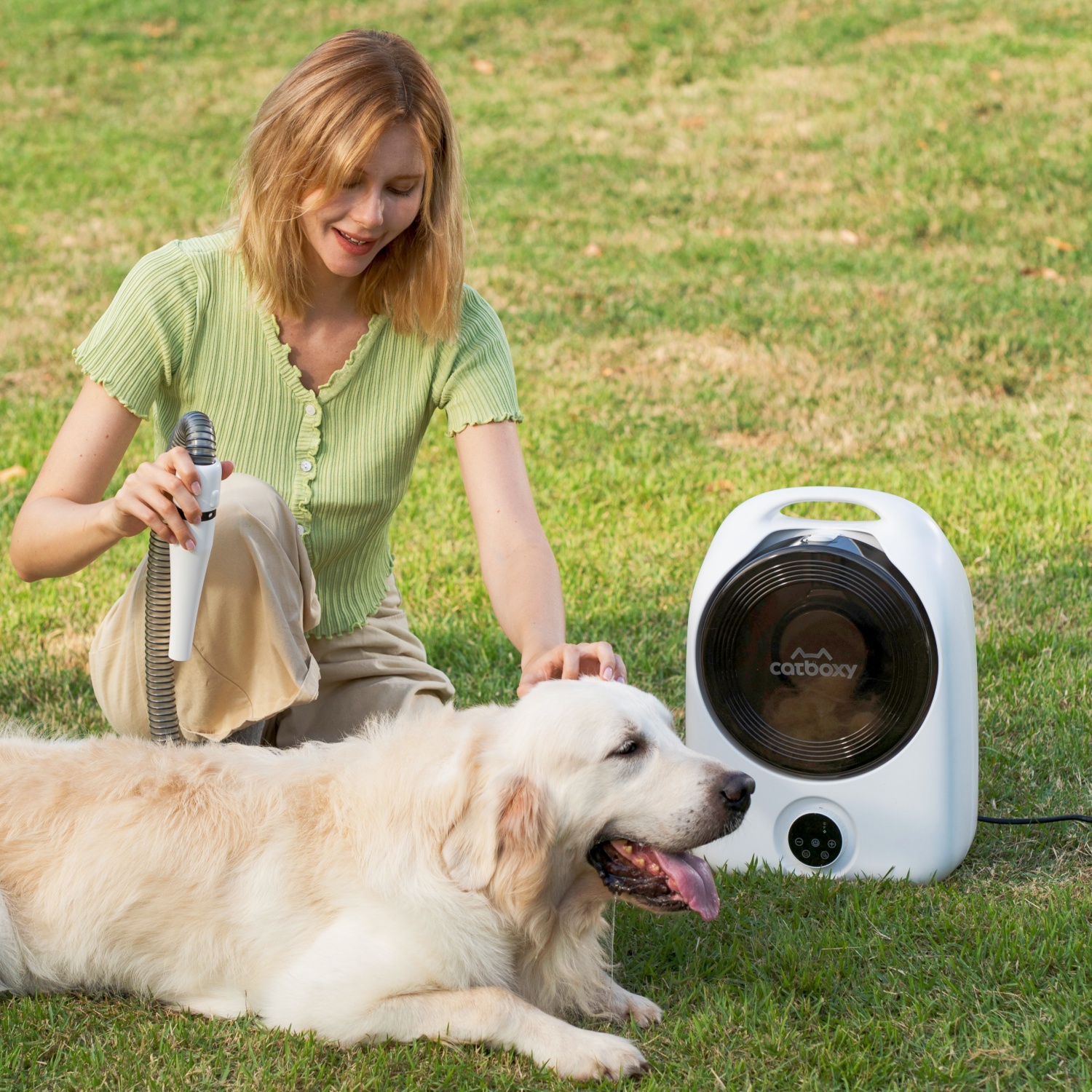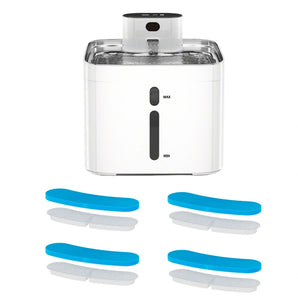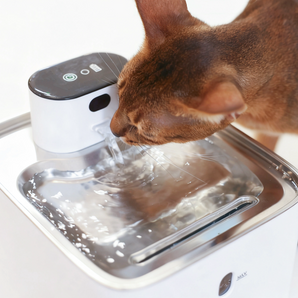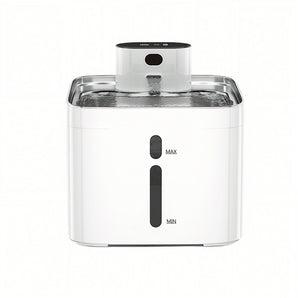
Back in 2023, a dog named Bobi from Portugal made headlines — not for a viral trick, but because he lived to the age of 31. That’s more than three decades of tail wags, naps in the sun, and walks with his family. For most dogs, reaching even half that age is already a blessing.
While genetics plays a role, it’s the daily care, routines, and environment that often make the biggest difference. Whether you’ve got a tiny terrier or a gentle giant, here are 9 health habits that can help your dog live longer — and better.
1. Daily Exercise — For Body and Mind
The saying “use it or lose it” applies to dogs, too. Regular movement keeps their weight in check, strengthens muscles and joints, and provides vital mental stimulation.
Without enough activity, dogs can become overweight — which raises the risk of joint issues, diabetes, and heart problems. For older dogs, excess weight can be especially hard on already-stiff joints.
Even just 20–30 minutes of walking, playing fetch, or letting them explore a nearby trail can make a huge difference. If they’re social, try a dog park. If they’re shy, even sniffing around a quiet yard works.
2. Emotional Connection Matters More Than You Think
Dogs are social creatures. Being left alone too often or lacking interaction can lead to stress, anxiety, and behavioral issues like chewing, whining, or indoor accidents.
Quality time isn’t just about long hikes or fancy toys. Sometimes it’s as simple as lying on the floor next to them, offering a belly rub, or chatting while you cook dinner. Enrichment toys, treat puzzles, and playdates at the park are great, too.
If your pup is an “only dog,” finding regular ways to engage with them — even short, frequent interactions — can go a long way toward emotional well-being.
3. Regular Grooming Isn’t Just About Looks
Mats, tangles, and dirt buildup can lead to more than just discomfort. They trap moisture and bacteria, which can cause itchy skin, infections, and ear problems — especially in long-haired breeds.
Frequent brushing helps, but regular trimming and cleaning are just as important, especially around the ears, paws, and tail area.
Of course, groomer visits can get expensive (and not all dogs love car rides). That’s why more owners are turning to home grooming kits. We’ve been using the Nova P1 Grooming & Drying Kit by Catboxy, and honestly, it’s saved us from a lot of hairy situations. The kit includes multiple grooming heads, a low-noise motor, and built-in storage. Best of all? It vacuums while you trim — no cleanup required.
If you’ve got a shedder or a dog with thick fur, having a tool like this at home can make grooming more manageable — and less stressful for both of you.

4. Don’t Skip Year-Round Parasite Protection
Fleas, ticks, and mosquitoes aren’t just summer pests. Many of them survive indoors or in mild climates year-round — and heartworm (spread by mosquitoes) can be deadly.
Even a short lapse in protection can expose your dog to risk. That’s why most vets recommend staying on top of flea, tick, and heartworm meds all year, not just in the warmer months.
Pro tip: Set a recurring reminder on your phone for treatments. It’s easy to forget when life gets busy.
5. Vet Visits — Even When They Seem Healthy
A lot of pet parents think: “My dog’s eating fine, seems active… we’re good.” But just like humans, dogs can have underlying issues that don’t show symptoms right away.
Annual checkups help catch things like dental disease, early-stage arthritis, or organ issues before they become serious. For senior dogs (age 7+), vets usually recommend checkups every 6 months.
If you’re worried about cost, some clinics offer wellness plans or pet insurance options to help spread out expenses.
6. A Healthy Diet Is More Than Just “Good Dog Food”
There’s no one-size-fits-all kibble. The best diet depends on your dog’s breed, age, size, and activity level. Puppies need more protein and calories; seniors may need fewer carbs or softer textures.
Most commercial dog foods are nutritionally balanced — but that doesn’t mean every bag is right for your pup. Ask your vet for advice, especially if your dog has allergies, sensitive digestion, or trouble keeping weight on.
And yes, we know those puppy-dog eyes at dinner are hard to ignore. If you want to share snacks, go for safe options like steamed carrots, blueberries, watermelon, or boiled chicken (no salt or oil). Avoid fatty, salty, or heavily seasoned human food — it may cause pancreatitis or other issues.
7. Don’t Forget Dental Care
By age three, most dogs already show signs of dental disease. That means bad breath, plaque, and, eventually, gum infections that can lead to tooth loss — or worse, affect the kidneys and heart.
Brushing your dog’s teeth daily is the gold standard. If that’s tough (we get it), try dental chews, oral rinses, or finger brushes. The key is consistency.
Start when they’re young if you can. A little training now can prevent big vet bills later.
8. Spaying/Neutering for Long-Term Health
Unless you’re planning to breed responsibly, spaying or neutering your dog is one of the best decisions you can make for their health. It can reduce or eliminate the risk of certain cancers, infections, and behavioral problems like roaming or aggression.
For females, spaying helps prevent uterine infections and breast tumors. For males, neutering lowers the risk of testicular cancer and prostate issues.
Talk to your vet about the best timing based on breed and health status.
9. Watch What They Sniff (and Chew!)
Dogs explore the world with their mouths. Unfortunately, that can mean chewing toxic plants, swallowing plastic toys, or even licking dangerous substances on the ground.
Keep household items like medications, cleaning products, and small objects out of reach. If you have a yard, check for toxic plants like sago palm, lilies, or azaleas. When out walking, keep an eye out for dropped food, gum, or even suspicious powders — you’d be surprised what they find.
One tragic example: in late 2024, a dog in Boston collapsed after licking white powder left in a park. It turned out to be drugs, and only quick action with Narcan saved its life.
Prevention is always easier than emergency vet visits.
Lifespan Isn’t Fixed — It’s Shaped
On average, dogs live 10–13 years. But those numbers aren’t set in stone. With attentive care and a healthy lifestyle, many dogs exceed those ranges.
For example:
-
Small breeds like Chihuahuas and Pomeranians often live 15+ years.
-
Medium breeds like Beagles or Poodles can reach 13–16 years.
-
Large breeds like Golden Retrievers typically live 10–12 years.
-
Mixed breeds, according to a 2019 study from the American Animal Hospital Association, may live longer than purebreds due to greater genetic diversity.
So while no one can guarantee a 30-year lifespan, you can give your dog the best shot at a long, vibrant life. It starts with small, consistent care — and a whole lot of love.











